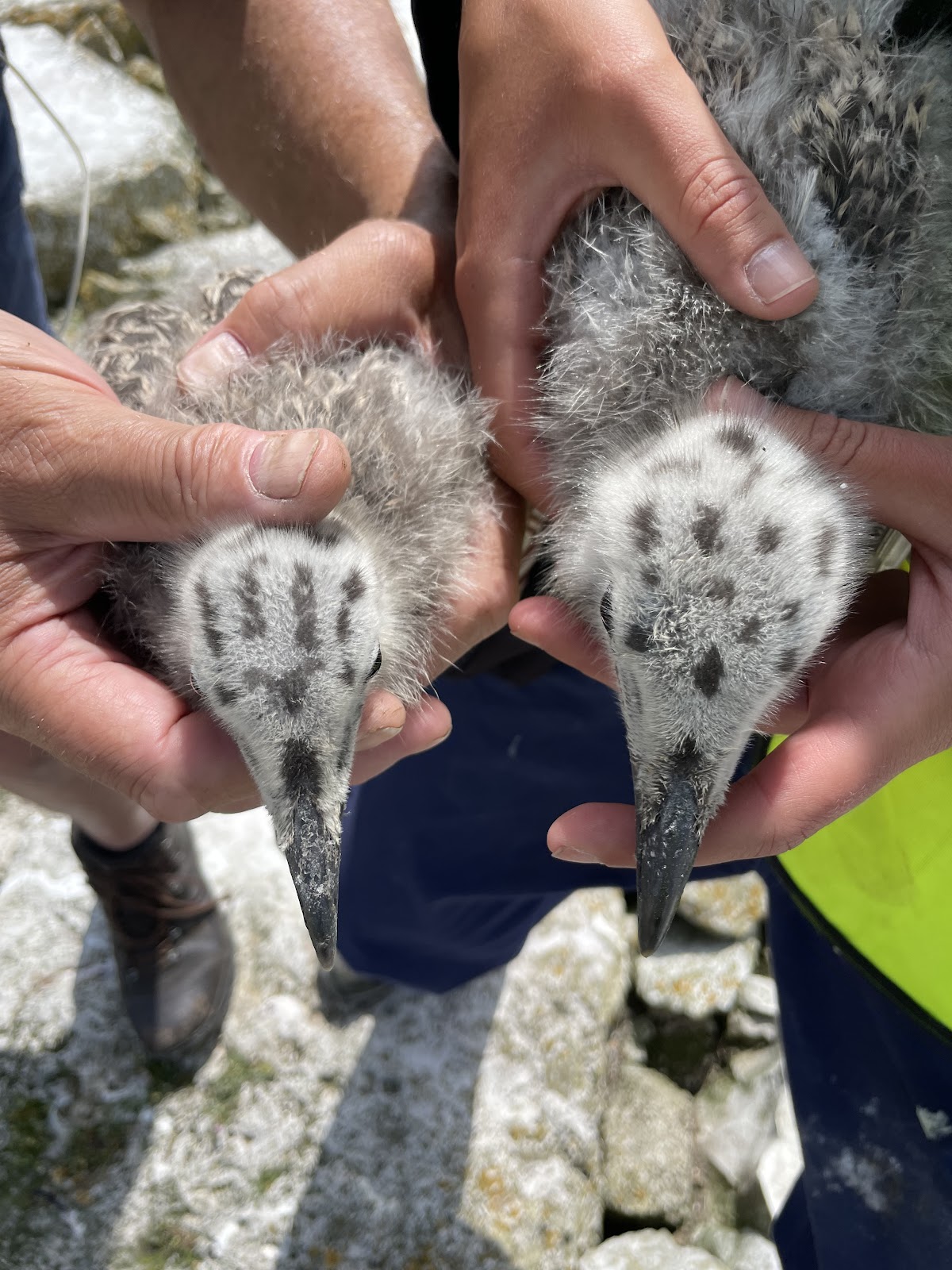A project organised by The Radipole Ringing Group and heavily supported by the AERG on the North Eastern and Outer Breakwaters in Portland Harbour targeting the Great black-backed Gulls (GBBGU) and Herring Gulls (HERGU) and with kind permission of the Portland Harbour Authority.
The scheme is registered with the British Trust for Ornithology (BTO) and was begun in 2011.
 |
| A challenging environment |
The project, begun by Terry Coombs and Steve Hales, is now run by Guy Hayden and Doug Rudge. In more recent years we have carried out Nest and Egg surveys before the ringing season. This year we found 317 nests, 622 eggs and 114 pulli, we were late with the second survey as weather got in the way and hence a significant number of pulli instead of eggs! At this stage the pulli are too small to ring. Incubation is around 27 days and then it is between 49 to 56 days from hatching to fledging. We gathered some interesting egg weight data. (For the analysis you will have to see our end of year report.) The breeding productivity is reported to be around 1.
 |
| Eggs being weighed |
 |
| A hatching! |
 |
| Pulli too young to ring |
In the ringing season, from late May to early July, we fit both BTO and Darvics to pulli of the GBBGU and HERGU. This years totals were 91 GBBGU, 28 HERGU, 2 Oystercatchers, 36 retraps or sightings of this years pulli, and 5 Sightings of adult GBBGU returned to the Breakwaters. The pulli are very difficult to find once they have left the nest.
 |
| Big challenge: identify the species- L HERGU, R GBBGU |
 |
| L HERGU, R GBBGU |
 |
| 2 Oystercatcher pulli also ringed this year |
Our Darvics are white with red letters and a code similar to P:45Z for the Great black-backed gulls and black with white numbers similar to 687 for the Herring gulls.
| Putting a Darvic on a GBBGU |
Our email for sightings is seawaterbirds@gmail.com
We always aim to include a variety of experience in the teams to promote education and learning.
In the last 5 years we lost two complete years' activities to COVID and Highly Pathogenic Avian Influenza (HPAI) and one year was ended early with potential HPAI signs in the colonies.
It is now common for us to find some previously rung Great black-backed gulls on the Breakwaters. The oldest one seen is 11 years old but they are known to achieve 26 years old. The project has now rung over 600 Great black-backed gulls and nearly 500 Herring Gulls.
We have a spread of sightings from Lubeck in Germany, Bay of Txingudi in France and A Coruña in Spain and this year we have had our first sightings from Ireland and we know of one gull that has managed a trip of over 132 miles within in two days.

















